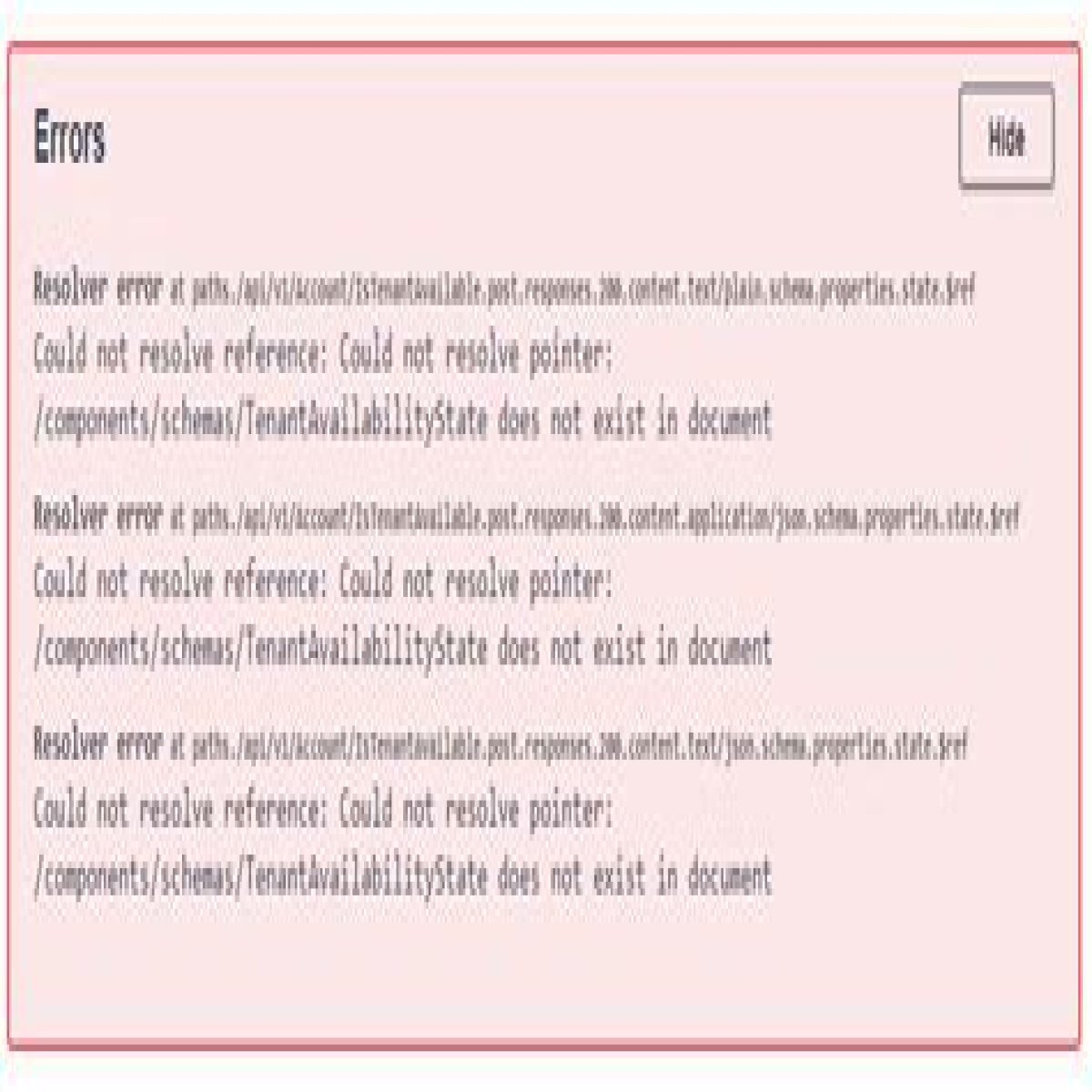As a part of my learning journey (with TestDriven.io) I'm learning about Swagger or OpenApi. I'm getting this error from Swagger: Could not resolve reference: Could not resolve pointer: /components/schemas/user does not exist in document that reference is clearly in the json file so why is it complaining ? (this text here is to pass site's minimum character limit in the post and has no relevance to the question itself)
{
"openapi": "3.0.2",
"info": {
"version": "0.0.1",
"title": "Users Service",
"description": "Swagger spec for documenting the users service"
},
"servers": [
{
"url": ""
}
],
"paths": {
"/users/ping": {
"get": {
"summary": "Just a sanity check",
"responses": {
"200": {
"description": "Will return 'pong!'"
}
}
}
},
"/users": {
"get": {
"summary": "Returns all users",
"responses": {
"200": {
"description": "user object"
}
}
}
},
"/users/{id}": {
"get": {
"summary": "Returns a user based on a single user ID",
"parameters": [
{
"name": "id",
"in": "path",
"description": "ID of user to fetch",
"required": true,
"schema": {
"type": "integer",
"format": "int64"
}
}
],
"responses": {
"200": {
"description": "user object"
}
}
}
},
"/auth/register": {
"post": {
"summary": "Creates a new user",
"requestBody": {
"description": "User to add",
"required": true,
"content": {
"application/json": {
"schema": {
"$ref": "#/components/schemas/user-full"
}
}
}
}
},
"responses": {
"200": {
"description": "user object"
}
}
},
"/auth/login": {
"post": {
"summary": "Logs a user in",
"requestBody": {
"description": "User to log in",
"required": true,
"content": {
"application/json": {
"schema": {
"$ref": "#/components/schemas/user"
}
}
}
},
"responses": {
"200": {
"description": "Successfully logged in"
}
}
}
},
"/auth/status": {
"get": {
"summary": "Returns the logged in user's status",
"security": [
{
"bearerAuth": []
}
],
"responses": {
"200": {
"description": "user object"
}
}
}
},
"/auth/logout": {
"get": {
"summary": "Logs a user out",
"security": [
{
"bearerAuth": []
}
],
"responses": {
"200": {
"description": "Successfully logged out"
}
}
}
},
"components": {
"securitySchemes": {
"bearerAuth": {
"type": "http",
"scheme": "bearer"
}
},
"schemas": {
"user": {
"properties": {
"email": {
"type": "string"
},
"password": {
"type": "string"
}
}
},
"user-full": {
"properties": {
"username": {
"type": "string"
},
"email": {
"type": "string"
},
"password": {
"type": "string"
}
}
}
}
}
}
}
Table of Contents
1 Answer
The components section needs to be on the top level of the JSON file like this:
{
"openapi": "3.0.2",
"components": {
"securitySchemes": {
"bearerAuth": {
"type": "http",
"scheme": "bearer"
}
},
...
},
...
}
The error was that components were inside paths rather than on the top level.
